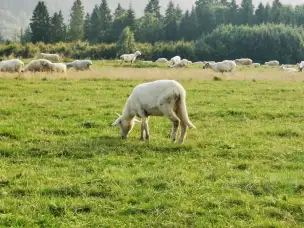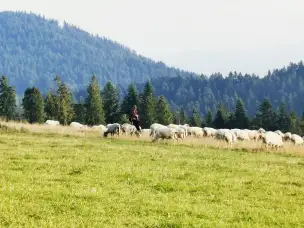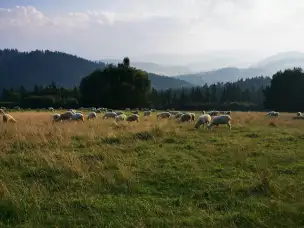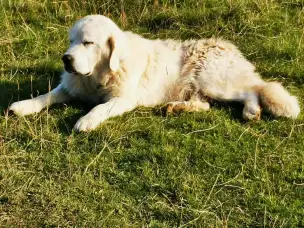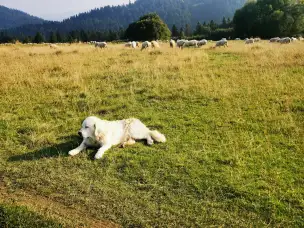Podhale is a region exceptionally rich in tourist attractions, drawing both nature lovers and enthusiasts of folk culture. Its greatest treasure is the Tatra Mountains—the highest mountain range in Poland—known for their majestic peaks, scenic valleys, and crystal-clear lakes such as Morskie Oko and Czarny Staw. Hiking in the Tatra National Park, regardless of the season, provides unforgettable experiences. In winter, the region transforms into a paradise for skiers, with popular resorts in Białka Tatrzańska, Bukowina Tatrzańska, and on Kasprowy Wierch.
Podhale is also famous for its thermal baths and geothermal springs. Thermal pools in Bukowina, Białka, and Chochołów offer relaxation in mineral-rich waters with stunning views of snow-covered peaks. But nature alone isn’t the whole story—the region’s scenic beauty plays a huge role too: vast alpine meadows, shepherds' huts, traditional mountain shelters (bacówki), and breathtaking panoramas from Gubałówka, Rusinowa Polana, or Łapszanka all contribute to Podhale’s unique charm.
Cakle - Polish Mountain Sheep
Those characteristic cream-white sheep often seen grazing in the alpine meadows of the Polish mountains—especially in the Tatras, Pieniny, and Beskidy—are primarily of the Polish Mountain Sheep breed (formerly often referred to as Podhale Sheep). These sheep are the foundation for producing traditional regional cheeses, such as:
- Oscypek – a hard, smoked cheese made from sheep’s milk (sometimes mixed with cow’s milk),
- Bryndza Podhalańska – a soft, salty, fermented cheese spread.
- You’ll most commonly encounter them in:
- Podhale (around Zakopane, Kościelisko, Bukowina Tatrzańska),
- The Pieniny Mountains (e.g., the areas around Czorsztyn and Krościenko),
- The Gorce and Beskid ranges,
- As well as in the Bieszczady Mountains.
Oscypek
A traditional Polish cheese made from sheep’s milk, oscypek originates from the Tatra and Podhale regions, especially in the areas around Zakopane. It is known for its firm texture, smoky aroma, and distinctive shape—usually small and spindle-like.
The production of oscypek is quite complex and involves the use of special wooden molds that imprint the cheese with its characteristic decorative pattern. After the whey is pressed out, the cheeses are smoked, giving them their unique taste and aroma. Traditionally, oscypki are handmade by highland shepherds (górale), and their production takes place mainly in the summer months, when sheep graze on fresh mountain pastures.
Oscypek is recognized as a regional specialty, and since 2008 it has been protected under the European Union’s Protected Designation of Origin (PDO) status. This means that authentic oscypek can only be produced in designated areas of Poland using traditional methods.
Żętyca
Żętyca is a byproduct of sheep’s milk cheese production, particularly during the making of oscypek. It is the liquid part of the whey that remains after the milk has curdled and the curds have been separated. Żętyca has a distinctive, slightly sour taste and is very refreshing. It commonly comes in two varieties—fresh and fermented.
In highlander (góralska) tradition, żętyca was a staple drink, especially for shepherds working in the mountains. It can be consumed fresh, but it is often left to ferment, which gives it a more intense, tangy flavor. In some areas of Podhale, it was also used in folk medicine as a digestive aid or to strengthen the body.
Like oscypek, żętyca is part of the cultural heritage of the Podhale and Tatra regions. Although it is not as widely known as the cheese itself, żętyca has been gaining popularity in recent years as a regional specialty. Its production, much like oscypek, has received official certification and legal protection, preserving its traditional character.
Polish Tatra Sheepdog (Owczarek Podhalański)
The Polish Tatra Sheepdog is a pastoral dog breed originating from the Tatra Mountains and the Podhale region. It is a large, strong, and courageous dog that has served for centuries as a guardian of sheep flocks. The Tatra Sheepdog is especially valued for its independence, loyalty to its owner, and its ability to protect livestock from predators such as wolves and lynxes. One of the breed’s most distinctive features is its long, thick, white coat, which provides excellent protection against cold and moisture.
These dogs are also known for their exceptional endurance and resistance to harsh weather conditions, making them ideal companions for shepherds in mountainous areas.



